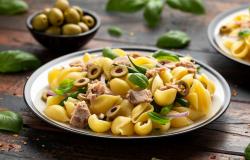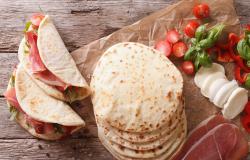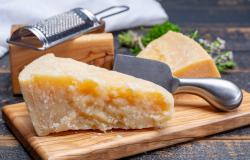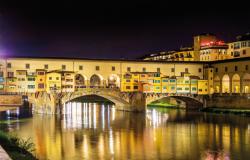Who invented Macaroni?
ITA:
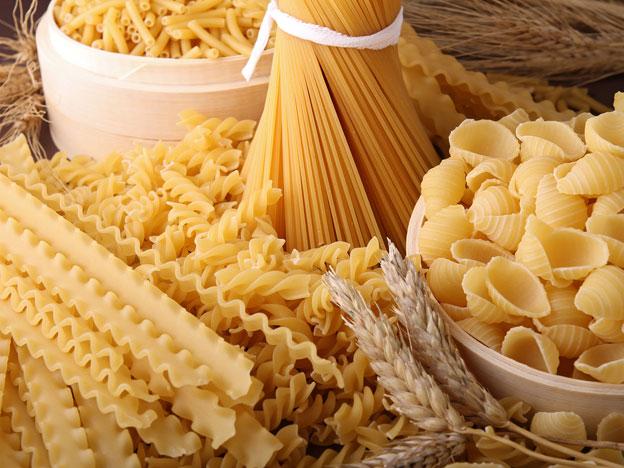
Use player to listen to Italian version
Who is this mysterious and important character whose invention is so much part of Italian life? He does not have, as he would deserve, squares or streets named after him despite the fact that no Italian could imagine what an upset there would be in eating habits if pasta disappeared from the table.
Fable and legend have often accompanied this essential of Italian cuisine, some given credit by the signature of famous writers, such asthe authoritative Matilde Serao, who told us of a magician who, in a dark Neapolitan ‘basso’, with doors and windows locked to keep outprying eyes, stirs a reddish concoction in a cauldron with the unmistakable odour of spaghetti with meat sauce. A legend, naturally, because at the time of magicians and witches Christopher Columbus had not yet discovered America and its tomatoes.
Then there is the more famous story of Marco Polo who returns from China with a packet of Chinese noodles in his bag. And, who knows, perhaps the novelty for the great traveller was in the raw material, because pasta made from rice flour – if this is what is being talked about – had probably not yet been seen by us. History, the real history, however, tells things differently, and knows perfectly well that at the time of Marco Polo’s return, pasta had been eaten at the Venetian table for at least two centuries.
Origins in Sicily
Following the trail of pasta through the dark centuries after the fall of the Roman Empire is a long and difficult matter: the absence of documents and sources makes the road hard. Certainly the medieval housewives of the time would put something of the type into the pan of soup, also using different types of grain such as spelt, barley and rye; but for the arrival of pasta as we understand it today it is necessary to jump a few centuries when several fast Arab ships landed on the beach of a green bay dotted with the golden colour of wild oranges.
Let us leave the description to the great Arab geographer, Al Idrisi who, in 1154, in his book Libro di Ruggero, said: ‘In Sicily there is a town called Trabia, an enchanting place blessed with water year-round andmills. In this town they make a food from flour in the form of strings.Enough is produced to supply, as well as the towns of Calabria, thosein Muslim and Christian regions, too’.
So at that time the industry of pasta-making must have been well-established in this place. There were many mills and the system for drying must have reached a high level, to allow it to be stored in wooden drums which the fast ships of the maritime republics of Genoa and Pisa could transport all over the then known world.
Pasta shapes
With the first written documents come the first records: during the13th century, pasta was wide spread all over Italy. Through what mysterious channels the different shapes of pasta made in the home began to appear is difficult to say. At the time of the domination of Puglia by the Angioini, lords of Provence, it emerged in the form of orecchiette, copying that of the Provençal crosets which then became corzetti in nearby Liguria; the itryia which they made in Sicily became Puglian tria and, with Spanish domination, changed into fideus and then the Ligurian fidelini.
Pasta-making soon left the domestic kitchen to become the work of pasta-makers. As well as the large areas of intensive pasta production such as the Amalfi and Sorrento coasts in Campania or the riviera area of Liguria, in almost every town there was the figure of the pasta-maker. In general, the same mills produced both small and long forms of pasta by hand, using the skills of the housewives who used to make pasta within the walls of the home.
So although we can reasonably affirm that there was no single inventor of macaroni, it is more difficult to explain why pasta in Italy has taken hold in Italy to become an integral part of the Italian DNA. Difficult, too, to know who first kicked a ripe tomato so that it landed on a plate of pasta. Certainly not Matilde Serao’s magician, but definitely a benefactor of humanity, anonymous but no less important for that.
Chi è questo oscuro e importante personaggio la cui invenzione ha tanta parte nella vita degli italiani? Egli non ha, come meriterebbe, né piazze né strade a lui intestate, eppure nessun italiano vuole nemmeno lontanamente immaginare quale capovolgimento avrebbero le sue abitudini alimentari se la pasta scomparisse dalla tavola.
Favole e leggende hanno spesso accompagnato questo must della cucina italiana, alcune accreditate dalla firma di famosi scrittori, come quella autorevole di Matilde Serao che ci ha raccontato del mago che in uno scuro ‘basso’ napoletano, con porte e finestre chiuse, al riparo da occhi indiscreti, mescola e rimescola in un calderone un intruglio colorato di rosso dall’inequivocabile profumo dei maccheroni al ragù. Leggenda, naturalmente, perché all’epoca dei maghi e delle streghe Cristoforo Colombo non aveva ancora fatto il suo avventuroso viaggio alla scoperta dell’America e dei suoi pomodori.
Poi c’è quella più nota di Marco Polo che torna dalla Cina con un pacco di vermicelli cinesi nella borsa. E, chissà, forse la novità per il grande viaggiatore, dovette consistere nella materia prima, perché pasta fatta con la farina di riso – se di quella si fosse trattato – probabilmente da noi non si era ancora vista. La storia, quella vera, racconta invece cose molto diverse e sa perfettamente che sulle tavole veneziane, al ritorno di Marco Polo, la pasta si consumava da almeno due secoli.
Origini in Sicilia
Seguire il percorso della pasta nei secoli bui seguiti alla caduta dell’Impero romano è cosa assai lunga e difficile: assenza di documenti e di fonti rendono ardua la strada. Certo qualcosa del genere la massaia medioevale dovette ogni tanto mettere nella pentola della zuppa, anche utilizzando granaglie diverse come la spelta, l’orzo, la segale; ma per arrivare alla pasta come noi la intendiamo oggi, bisogna fare un salto di qualche secolo, quando alcuni veloci sciabecchi musulmani accostarono la spiaggia in una baia verdeggiante punteggiata dal colore dorato delle arance selvatiche.
Lasciamo la parola al grande geografo arabo Al Idrisi che nel 1154, nel suo Libro di Ruggero, dice: ‘In Sicilia vi è un paese chiamato Trabia, luogo incantevole dotato di acque perenni e di mulini. In questo paese si fabbrica un cibo di farina a forma di fili in quantità tali da rifornire oltre i paesi della Calabria, quella dei territori musulmani e cristiani’.
Dunque in quel momento l’industria della pastificazione doveva essere in quel luogo già molto avanzata; c’erano molti mulini e anche il sistema di essicazione doveva aver raggiunto un buon livello, tale da consentire lo stivaggio in baricelle di legno, che le veloci navi delle Repubbliche marinare di Genova e Pisa trasporteranno in giro per il mondo allora conosciuto.
Le forme di pasta
Con i primi documenti scritti si affacciano le prime notizie. Durante il secolo XIII la pasta è ormai endemica su tutto il territorio nazionale. Attraverso quali misteriosi canali i diversi formati casalinghi si siano diffusi è difficile dire. Alla dominazione in Puglia degli Angioini, signori di Provenza, può farsi risalire il formato delle orecchiette che ripetono quello dei crosets provenzali, divenuti poi corzetti nella vicina Liguria; la itryia che si fabbricava in Sicilia, diviene la tria pugliese e con la dominazione spagnola si trasforma in fideus e poi nei fidelini liguri.
Dalle cucine domestiche la pasta esce ben presto per diventare lavoro per i maccheronai. Oltre alle grandi aree di intensa produzione pastaria come la costa amalfitana e sorrentina in Campania o le zone rivierasche della Liguria, quasi in ogni piccolo centro esiste la figura del maccheronaio. In principio sono gli stessi mugnai a produrre manualmente piccoli e lunghi formati di pasta, usando quella manodopera femminile che già abilmente confezionava la pasta tra le mura di casa.
Se dunque possiamo ragionevolmente affermare che non esiste un inventore dei maccheroni più difficile è dimostrare perché la pasta si sia accasata in Italia tanto da divenire parte integrante del DNA degli italiani. Così come resta da capire chi per primo ha spezzettato un pomodoro maturo in un piatto di spaghetti con il cacio. Non certo il mago di Matilde Serao, sicuramente però un benefattore dell’umanità, anonimo, ma non per questo meno importante.
